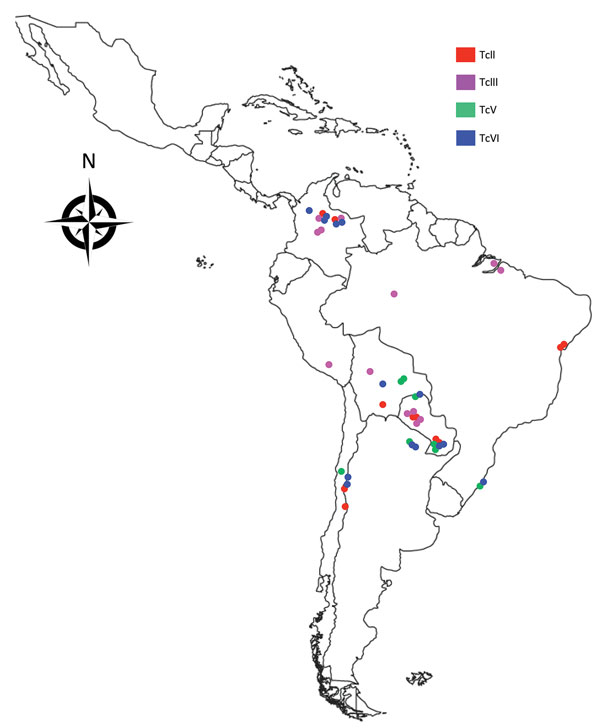Volume 22, Number 8—August 2016
Dispatch
Importation of Hybrid Human-Associated Trypanosoma cruzi Strains of Southern South American Origin, Colombia
Figure 1

Figure 1. Geographic distribution of TcII, TcIII, TcV, and TcVI Trypanosoma cruzi clones, South America, 2002–2010. A total of 57 T. cruzi biologic clones were assembled for analysis. Of these, 24 were isolated from humans; triatomine vectors (Panstrongylus geniculatus, Rhodnius prolixus, and Triatoma venosa insects); and sylvatic mammalian hosts (Dasypus spp. armadillos) in Antioquia, Boyaca, and Casanare Departments in northern Colombia. The remaining 33 were reference clones derived from a range of representative hosts and vectors across South America (Technical Appendix 1 Table 1). Dots indicate geographic strain origin of biologic clones; colors denote isolate discrete typing units.
Page created: July 15, 2016
Page updated: July 15, 2016
Page reviewed: July 15, 2016
The conclusions, findings, and opinions expressed by authors contributing to this journal do not necessarily reflect the official position of the U.S. Department of Health and Human Services, the Public Health Service, the Centers for Disease Control and Prevention, or the authors' affiliated institutions. Use of trade names is for identification only and does not imply endorsement by any of the groups named above.